For some enthusiasts, motorcycling’s most exciting ever era is that of the two-stroke – when shrieking “stinkwheels” dominated the world’s racetracks, and street riders too could get their kicks on light, powerful bikes that made rasping exhaust notes and clouds of blue smoke.
The two-stroke’s racing dominance ended in 2002, when Valentino Rossi won the inaugural MotoGP title on Honda’s four-stroke RC211V, confirming the demise of the fearsome 500cc factory V4s that had ruled the tracks since the mid-Eighties.

On the road, the two-stroke’s heyday was arguably the late Eighties and early Nineties, when the dream bike of young riders in a hurry was a sporty 250cc stroker – preferably Kawasaki’s KR-1, Suzuki’s RGV250 or Yamaha’s TZR250.
These quarter-litre race-replicas had engine capacities of no more than a cheap shampoo bottle, but they were a feisty breed. Their rev-happy twin-cylinder engines made 50bhp and gave top speeds of 130mph, and their aluminium frames helped keep weight below 130kg.
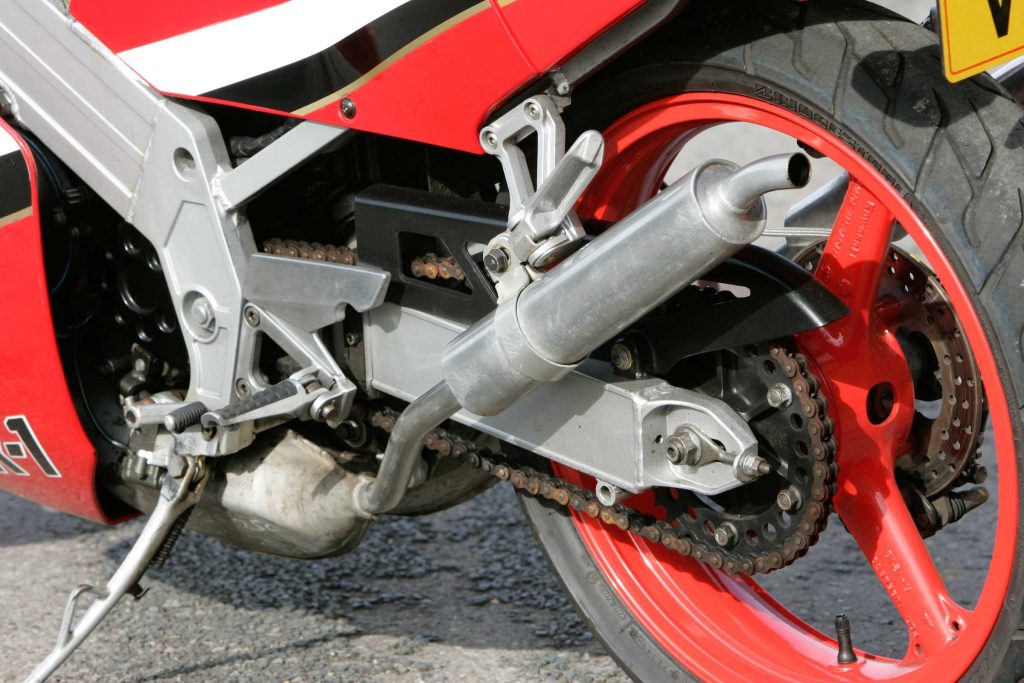
Most importantly, their narrow power bands and sweet-steering chassis made every ride down a twisty road an opportunity to imagine you were lapping a Grand Prix circuit with factory 500cc aces Eddie Lawson and Wayne Rainey or 250cc maestro Sito Pons.
Kawasaki’s glory days in two-stroke racing were even further back, in the late Seventies and early Eighties, when the firm had won four titles with the KR250, a “tandem twin” whose cylinders were in line with the bike. By contrast the KR-1’s cylinders were set across its frame in conventional parallel-twin format.
That twin-spar aluminium frame confirmed how far motorcycle technology had come since the days of the steel-framed KR250. The frame held thick front forks and a single rear shock unit that was operated via a rising-rate linkage system.
The KR-1’s full fairing could have come straight from a racebike, apart from its headlight and mirrors. It was finished in striking red, white and black or the more traditional Kawasaki combination of white, light green and blue.
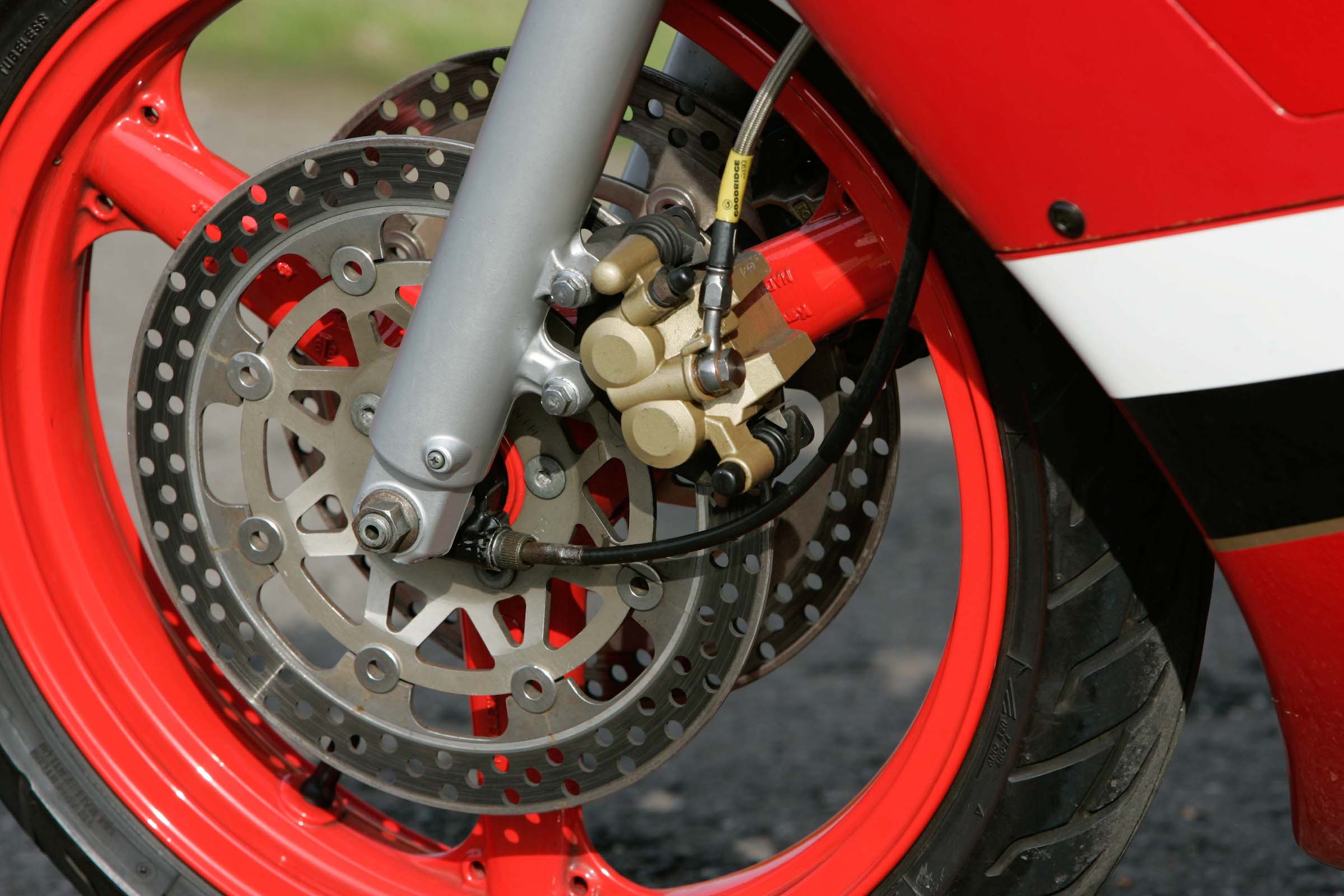
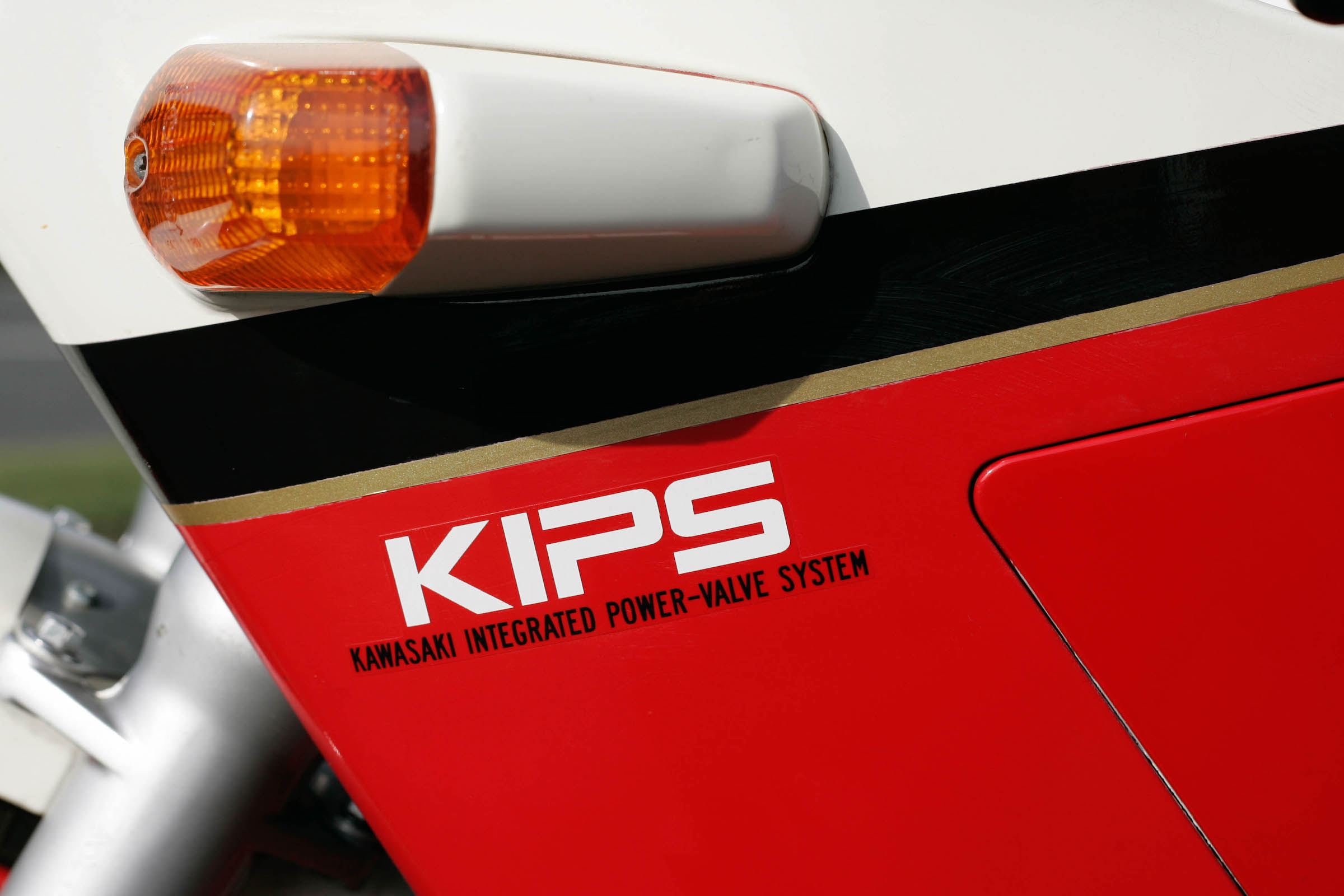
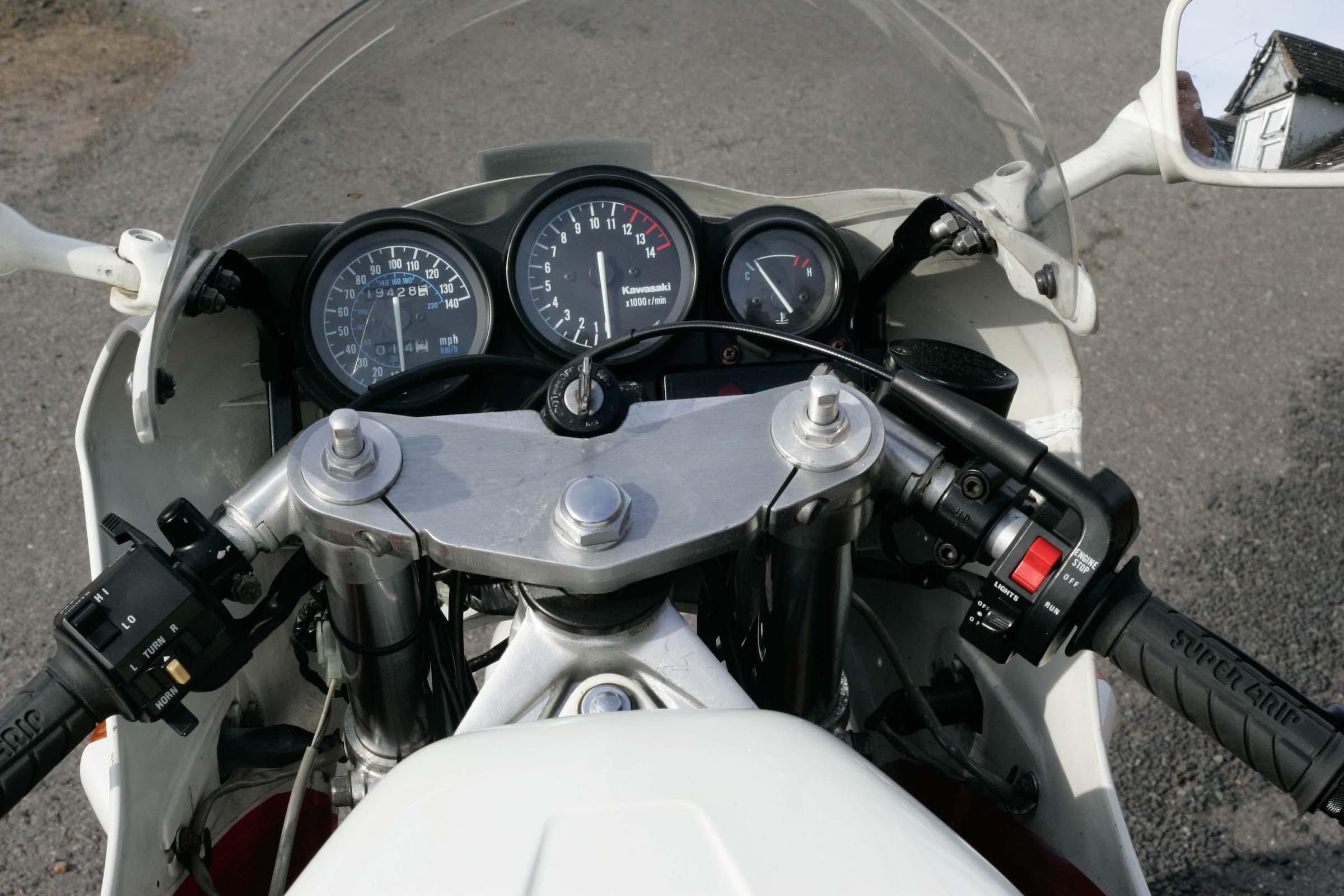
Behind that fairing, the 249cc engine was liquid-cooled, and featured a racing style six-speed gearbox that could be disassembled from the side. The exhaust system incorporated KIPS – Kawasaki’s power-valve system, designed to add torque at low revs. The maximum output of 55bhp was impressive for such a small powerplant.
There was no mistaking the KR-1’s aggressive intent, from the moment I climbed aboard. Its handlebars were clip-ons, mounted below the top yoke; the pillion seat was a thin piece of foam. At a standstill the Kawasaki seemed almost ridiculously light, slim and manoeuvrable, thanks to its claimed dry weight of just 123kg.
Starting was effortless. The lightest of pressure was required on the kickstarter to bring the two-stroke engine crackling into life, with a puff of smoke and that distinctive smell that has long been lost from high-performance bikes.
Pulling away was easy enough, too, though the little liquid-cooled lump was slightly rough until it had warmed up, and even after that its low-rev response was feeble. The Kawasaki choked and wheezed below 5000rpm, and pulled more strongly from that point though still without any real enthusiasm…
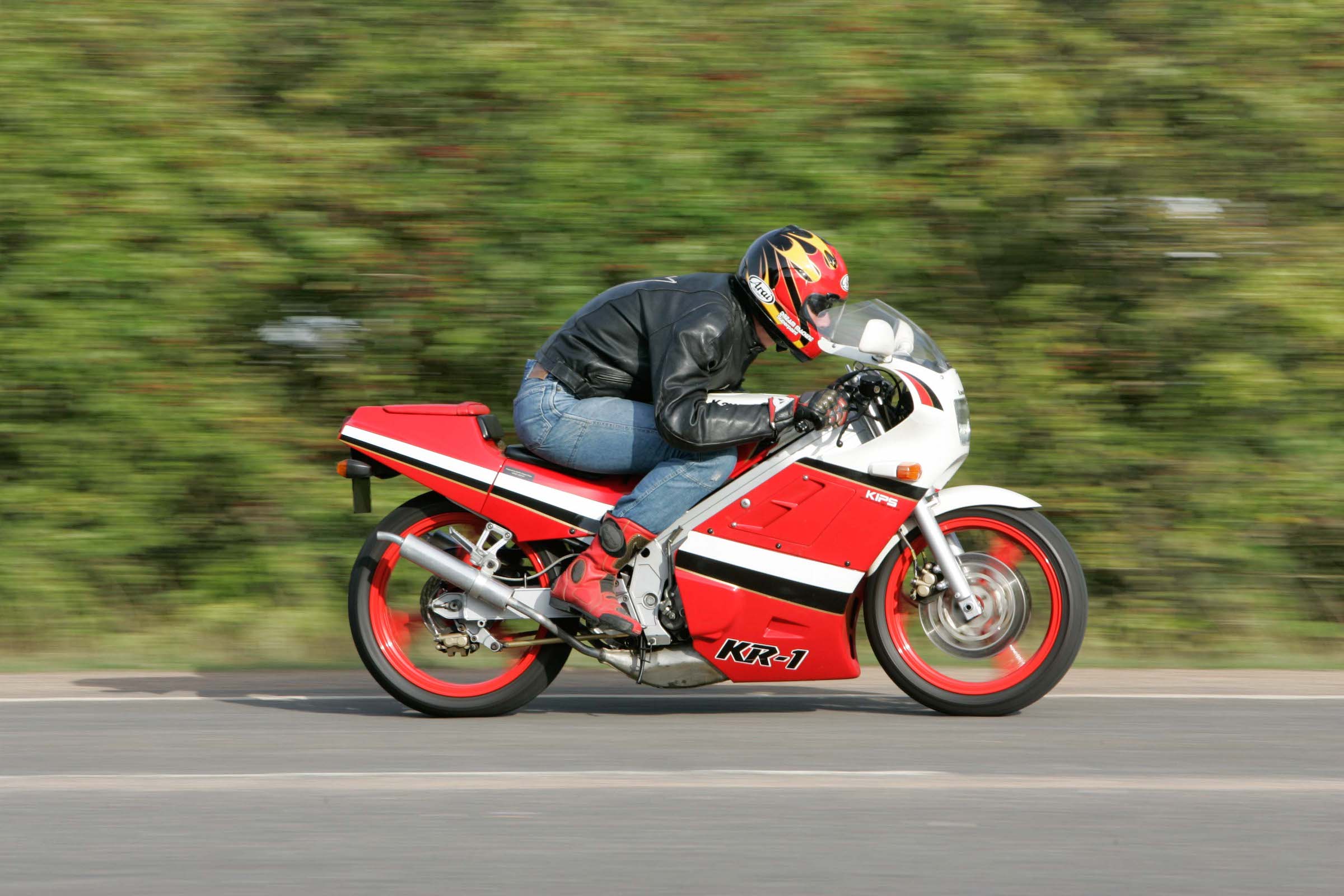
Until its tacho needle hit about 7500rpm, when the KR-1 awoke in a rage. Suddenly it was all sound, fury and aggression, screaming forward with the tacho needle flicking towards the 11,500rpm redline while my left boot jabbed at the gearlever to keep up.
In the first three gears there was high-revving fun to be had at legal-ish speeds. By 8000rpm and into the power band in fourth gear it was doing an indicated 80mph, tearing forward with two cogs and 50mph still to go.
The leant-forward riding position encouraged throttle-to-the-stop behaviour, especially as the fairing and screen gave a useful amount of wind protection. Some riders have complained of numb hands from vibration, and there was a bit of a buzz at around 7000rpm, but that wasn’t a problem on my relatively short ride.
If the little Kawasaki’s straight-line speed was impressive, its handling was better still. That stout twin-spar frame felt sufficiently rigid to have coped with twice the engine’s power output. And the bike’s light weight, racy geometry and 17-inch diameter front wheel meant it could be flicked into bends with a caress of the bars.
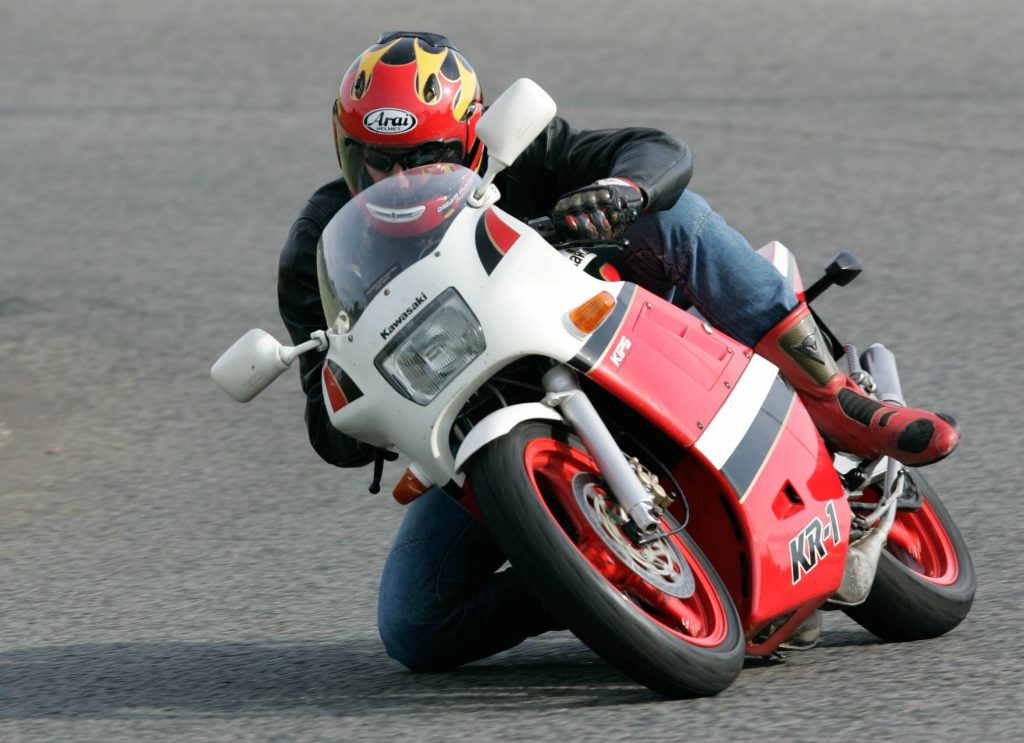
Suspension was firm without being harsh, and sufficiently well damped to keep things under control. The KR-1 sometimes felt slightly twitchy on a bumpy road, but I had to try hard to get it seriously out of shape. Its brakes and tyres were excellent too.
That all added up to a deliciously quick, agile, responsive and enjoyable machine with the potential to make any road ride feel like a GP. The Kawasaki lived up to expectations on the track back in ’89, too, with numerous production race victories.
Inevitably with such a focused bike, there were drawbacks. The thin seat quickly became painful. Fuel range from the 16-litre tank could drop below 90 miles with hard use (and why would you ride it any other way?). And the motor drank two-stroke oil almost as fast as petrol, requiring frequent replenishing of the under-seat tank.
More seriously, the KR-1 was far from the best finished or most reliable model that Kawasaki has ever produced. The fact that many were raced and most were ridden hard didn’t excuse the fact that the engine suffered with a variety of problems including piston failure.
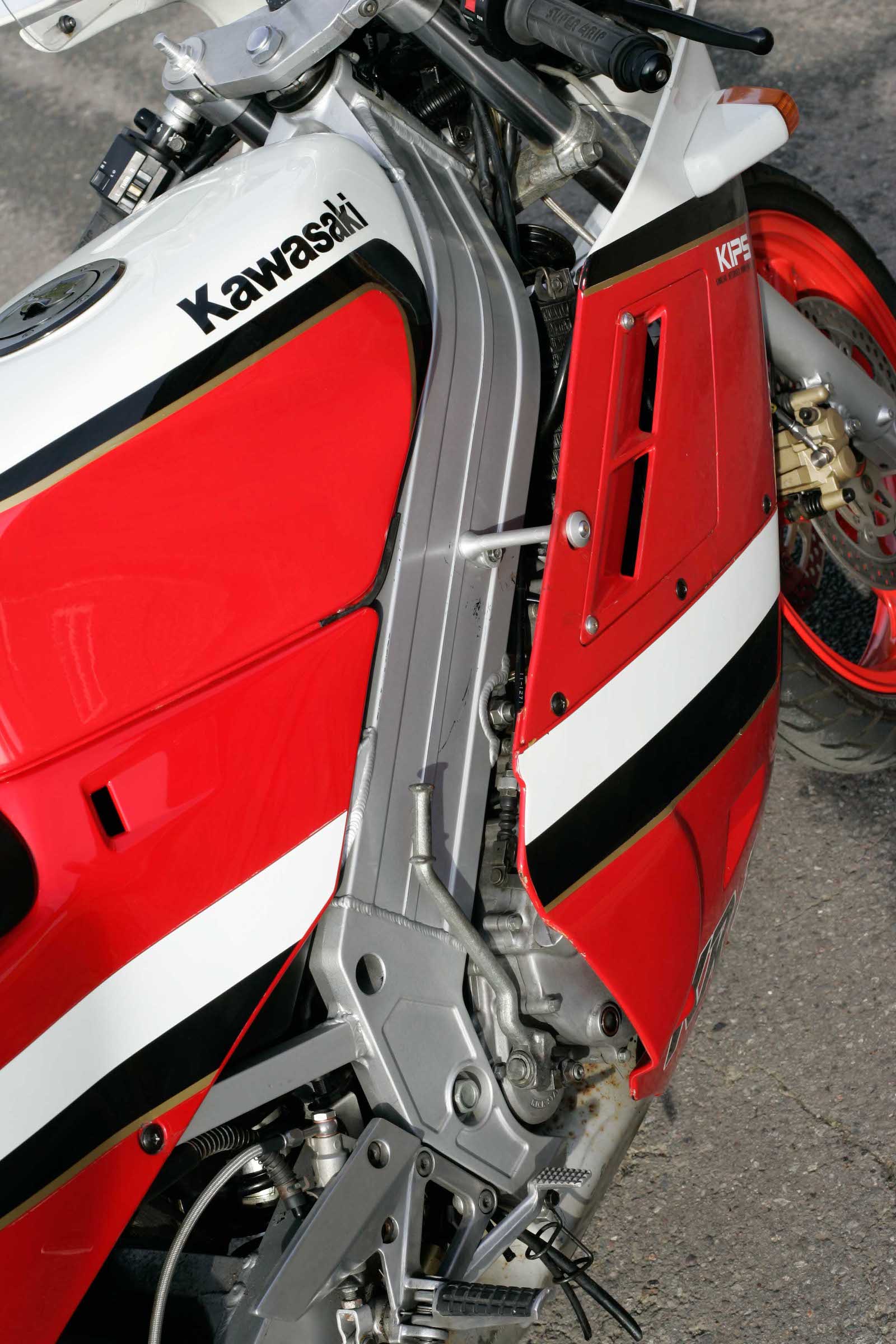
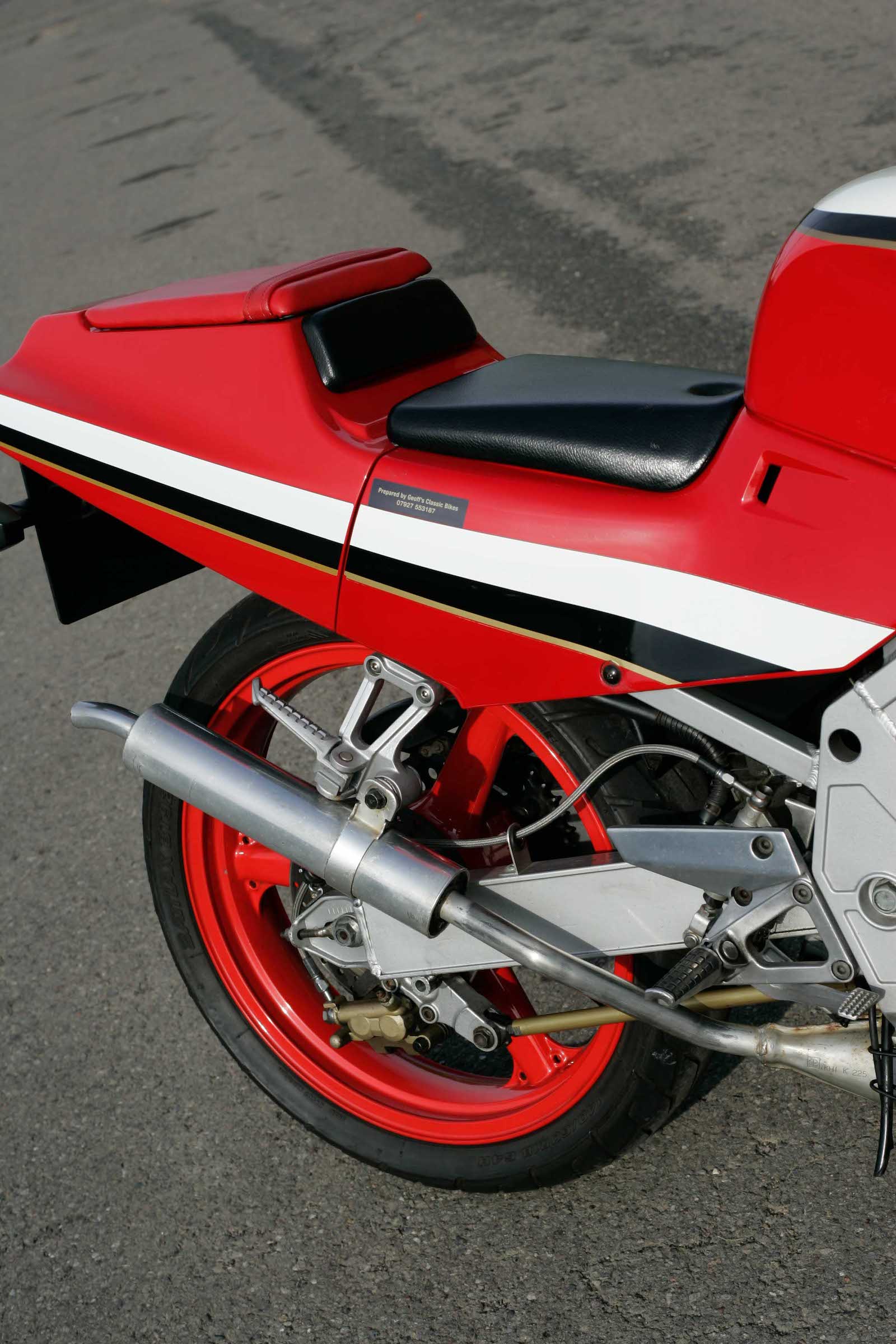
At least Kawasaki acted quickly to update it. Just a year after its launch the model was replaced by the KR-1S, which produced an extra 5bhp and featured a new frame, suspension and front brake – all of which made the two-stroke an even quicker and more track-ready machine.
Unfortunately for Kawasaki, what it didn’t do was make the KR a commercial success. Despite the twin’s performance, and some notable production racing successes, it sold in relatively small numbers. At the end of 1992, after just four years, it was dropped from the range.
The rev-happy twin hadn’t lasted long but it had given Kawasaki’s image a boost, and had become a cult machine for a small group of enthusiasts. Three decades later that passion remains. The era of two-stroke race-replicas is long gone. But for as long as bikes like the KR-1 are ridden and enjoyed, the stinkwheels will be fondly remembered.
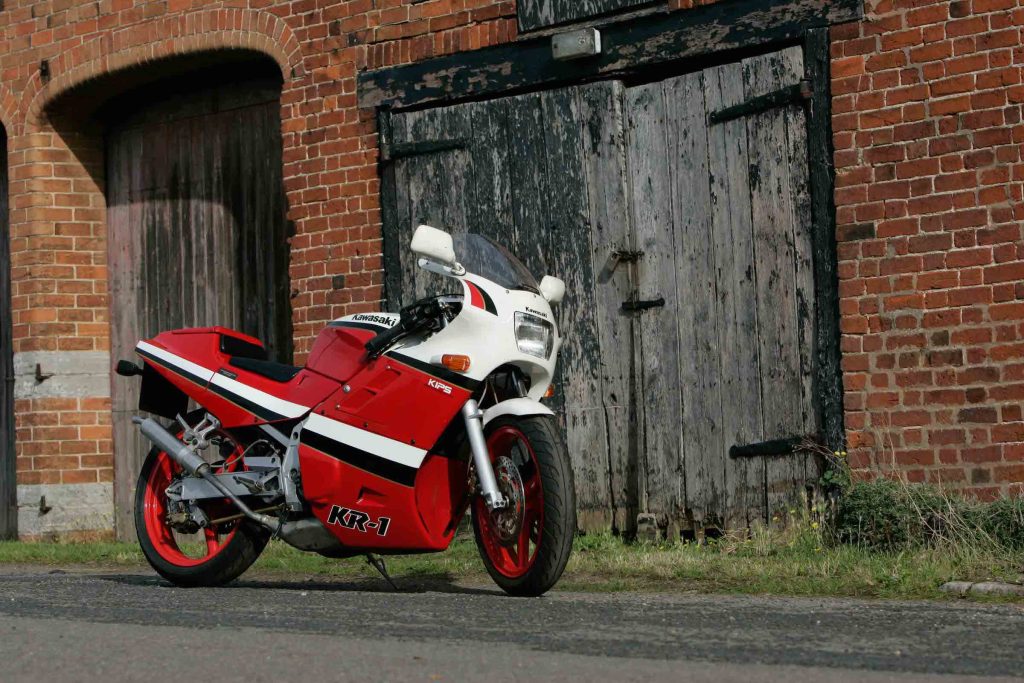
1989 Kawasaki KR-1
You’ll love: Racebike style thrills on the road
You’ll curse: Racebike style comfort and costs
Buy it because: Addictive speed, sound and smell
Condition and price range: Project: £3000 Nice ride: £5000 Showing off: £7000
Engine: Liquid-cooled two-stroke parallel twin
Capacity: 249cc
Maximum power: 55bhp @ 10,500rpm
Weight: 123kg without fluids
Top speed: 130mph
Read more
50 years on, the Kawasaki Z1 is still one of the meanest motorcycles on the road
Ad Break: In 1975, Kawasaki urged you to think even smaller
9 Cinderella classic bikes hidden in the shadows









That’s no good, cannot be bothered to spell out the meaning of KIPS!